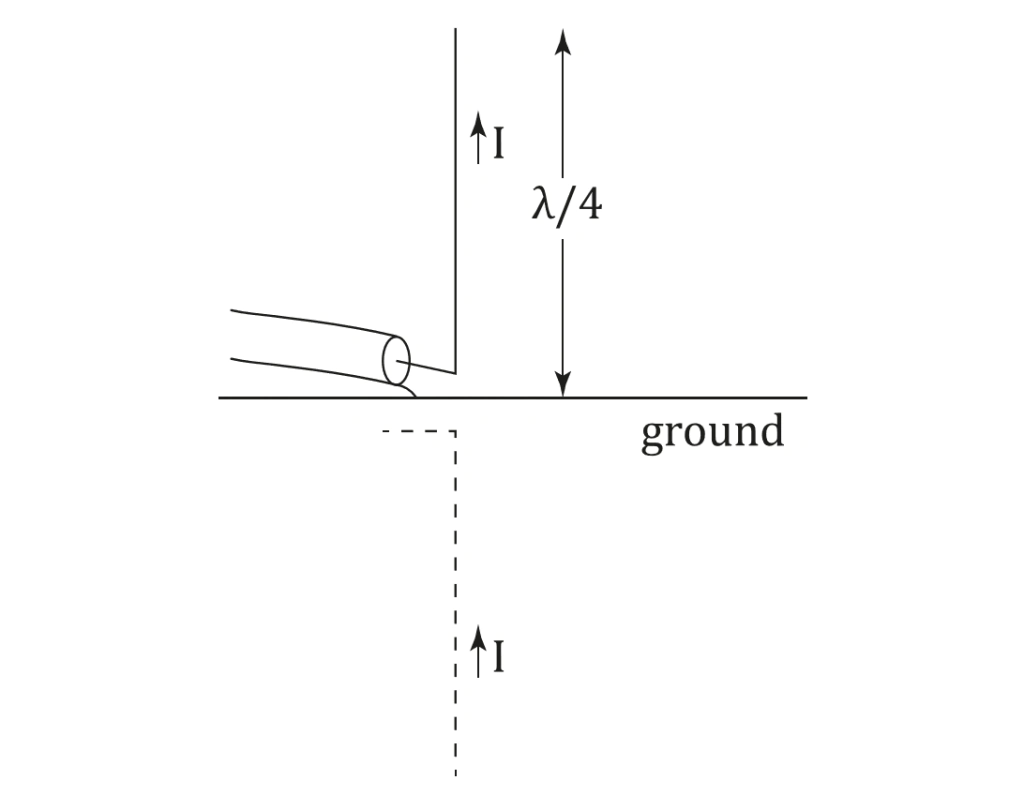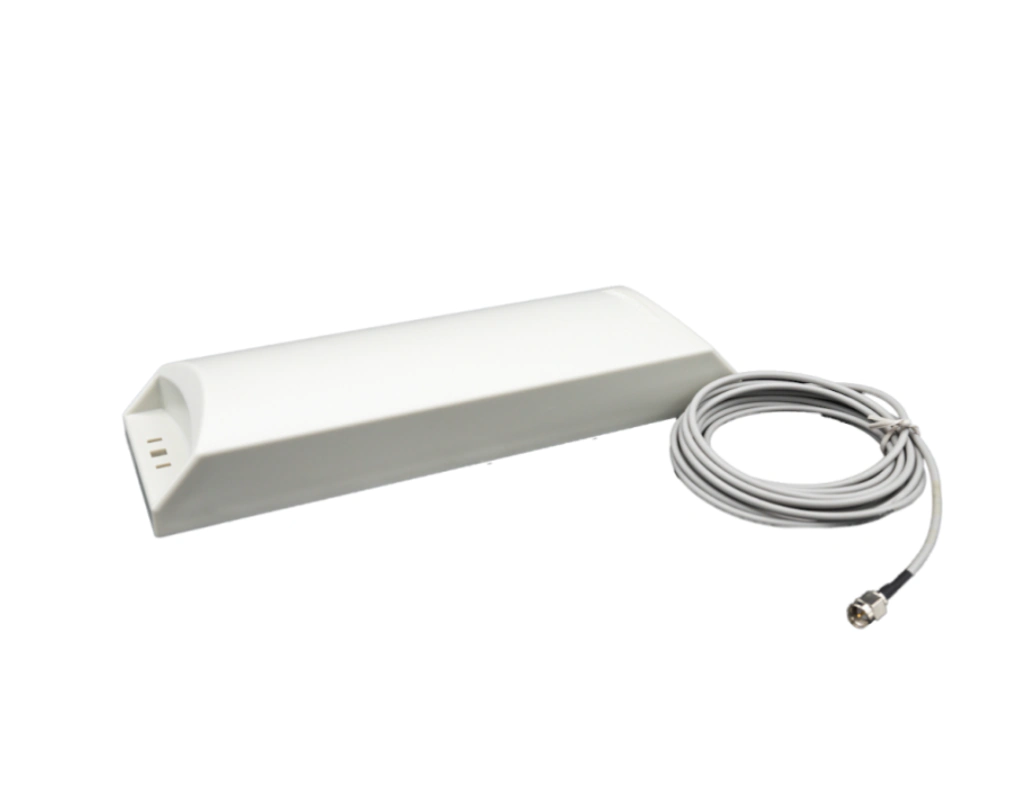The following article will tell you how monopole and dipole antennas work, what their characteristics are, and the differences between these two types of antennas.
Properties and operation of a dipole antenna
The dipole is the simplest type of antenna. Already with two conducting wires such a linear antenna can be realized. The two wires are arranged at an angle of 180 degrees and are electrically symmetrically fed in the middle. The length of the two wires together is λ/2 (half wavelength). From an electrotechnical point of view, this is a resonant circuit open on one side. Due to the applied electrical voltage, a current flows through the two wires. Depending on the voltage and current distribution on the dipole, current and voltage alternately cause a magnetic and electric field which radiates into free space as an electromagnetic wave. As far as its radiation characteristic is concerned, the dipole is an omnidirectional radiator. It radiates evenly at a perpendicular angle to the wires 360 degrees circularly (Click here for a more detailed explanation of the classification of mobile radio antennas according to radiation characteristics).

Properties and operation of a monopole antenna (also groundplane antenna)
Alternative terms for the monopole antenna are groundplane antenna or quarter-wave radiator. The rod antenna, also called a Marconi antenna, is a typical monopole. Unlike a dipole, a monopole antenna does not consist of two electrical conductors, but only one. It stands vertically on a ground plane, which is for example an electrically conducting surface or radials (several downward protruding rods at the base of the antenna around the monopole). The ground plane is at ground or earth potential. It reflects (mirrors) the usually λ/4 (one quarter of the wavelength) long vertically standing electrical conductor and together with the reflection creates a virtual, λ/2 long dipole. The monopole is fed asymmetrically. The conductor is fed with the electrical antenna signal, and the ground plane is connected to the ground plane. As with the dipole antenna, the monopole antenna is an omnidirectional antenna. It emits the electromagnetic waves perpendicular to the antenna axis in all spatial directions uniformly at 360 degrees. The radiation is limited to the upper half-space.
Design and installation differences between dipole and groundplane antennas
One of the most serious installation differences between dipole and monopole antennas is that monopole antennas require a ground reference and are often mounted directly to the ground plane (housing or circuit board of an appliance, body of a car). Dipole antennas can be installed remotely from the ground plane of a device or object because of the symmetrical feed and built-in ground reference. The better the conductivity of the ground plane of a monopole antenna, the better the reflection of the λ/4-long conductor and the more ideal the antenna characteristics. Since a monopole is a rather small electrical radiator with λ/4-length, it is very suitable for mobile devices. The length of the monopole can be further minimized with inductive shortening elements, which increases the antenna losses somewhat. Such shortening elements are effective only for a narrowband frequency range. In mobile radio devices, antennas in the form of inverted-L monopoles planarly deposited directly on printed circuit boards are usually used. This type of antenna is also known as a printed monopole antenna.
In contrast to a dipole, monopole antennas do not allow radiation independent of the orientation of the ground plane. A dipole antenna, on the other hand, can be oriented independently of the ground plane of a device. In addition, the radiation characteristics of a dipole antenna can be adapted by using, for example, kink dipoles (radiator halves arranged at a 90 degree angle) or ring dipoles (curved radiator halves).



